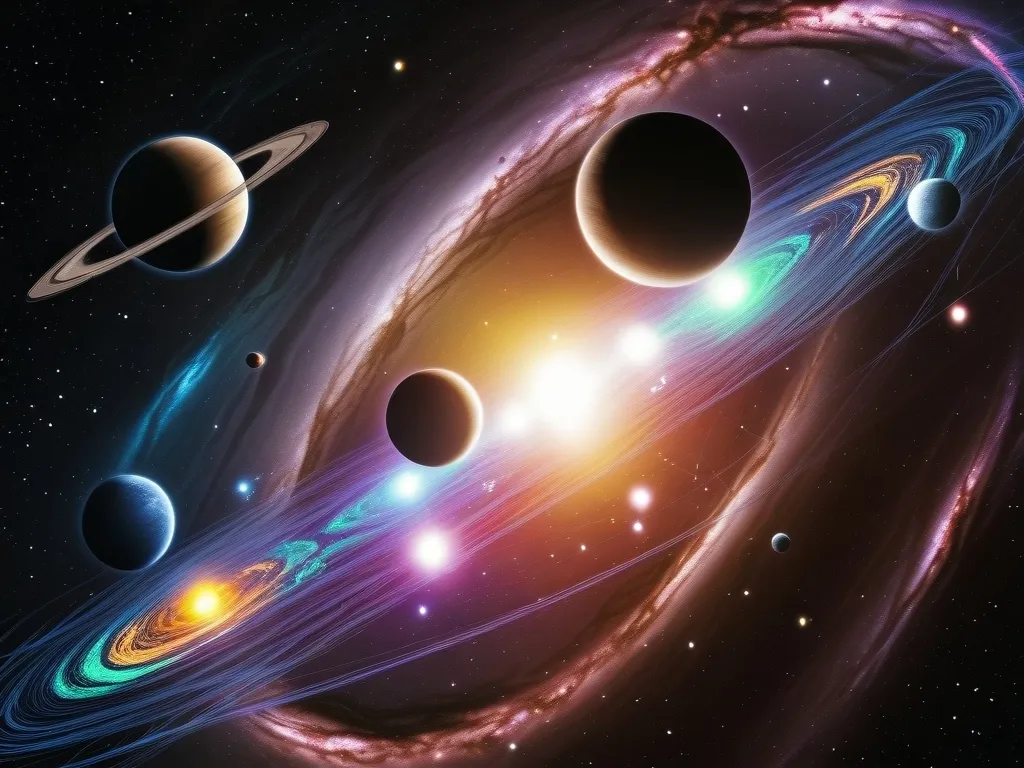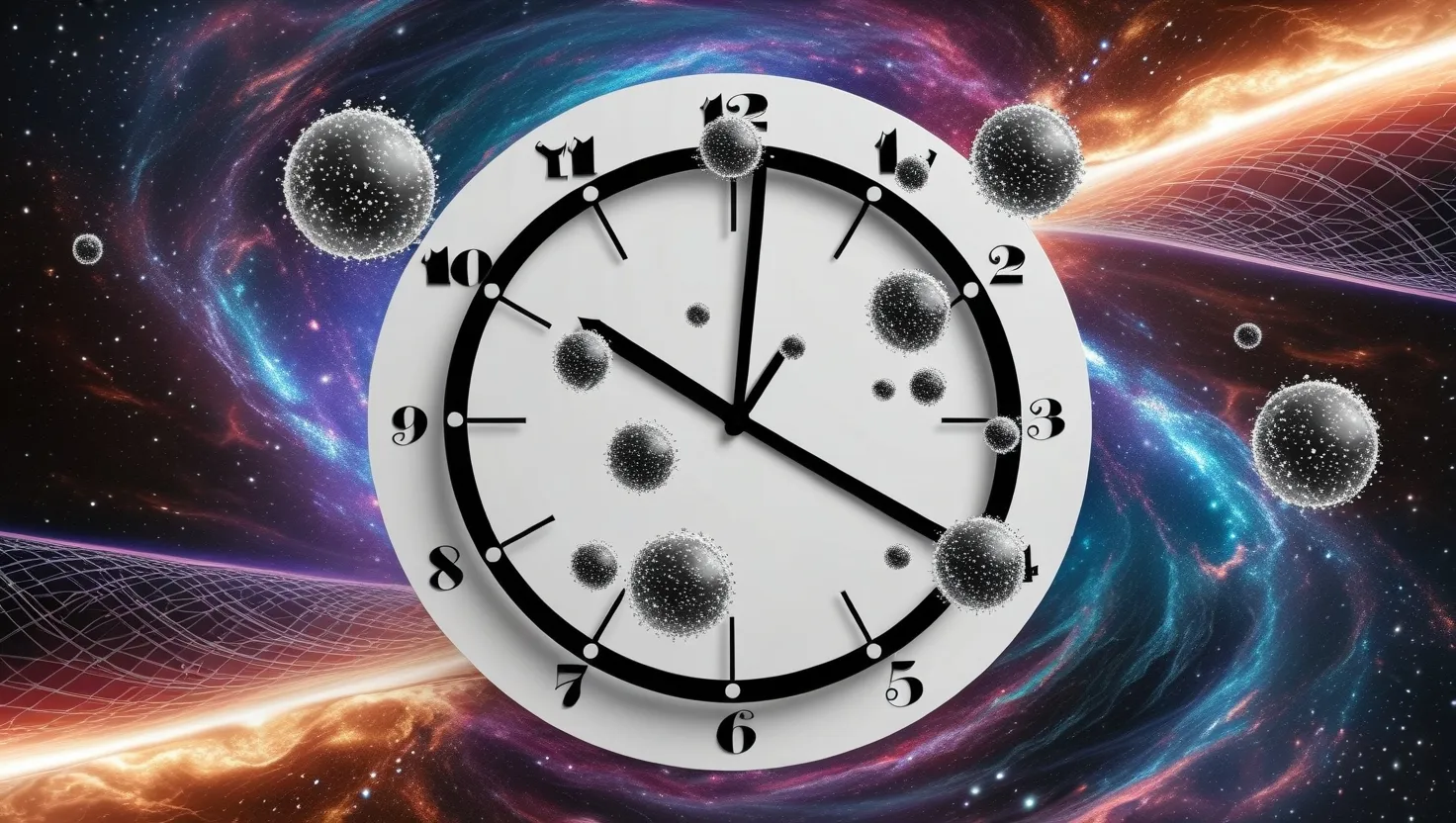As I delve into the intriguing concept of the “music of the spheres,” I find myself at the crossroads of ancient philosophy, modern science, and the enduring human fascination with the mysteries of the universe. This idea, which suggests that celestial bodies emit unique audio frequencies, has captivated the imagination of both scientists and those inclined towards conspiracy theories.
The roots of this concept date back to ancient Greece, where the philosopher Pythagoras proposed that the movements of celestial bodies – the Sun, Moon, and planets – could be understood as a form of music. Pythagoras, known for his discovery of the mathematical principles underlying musical harmony, believed that the universe was governed by a set of numerical ratios that manifested in both the harmony of music and the movements of celestial bodies. He observed that the pitch of a musical note was inversely proportional to the length of the string producing it, and he applied this principle to the cosmos, suggesting that each planet produced a unique hum based on its orbital revolution.
This theory, often referred to as the “music of the spheres” or “harmony of the spheres,” was later developed by Johannes Kepler, a 16th-century astronomer. Kepler, while not believing that this “music” was audible to the human ear, felt that it could be perceived by the soul. In his work, “Harmonices Mundi” (Harmony of the Worlds), Kepler laid out a detailed argument for how the ratios of the maximum and minimum angular speeds of each planet corresponded to consonant musical intervals. He envisioned the Solar System as a grand orchestra, with Saturn and Jupiter as the basses, Mars as the tenor, Venus and Earth as the altos, and Mercury as the soprano, all singing in perfect harmony.
The idea that the universe is filled with a hidden, inaudible music has been a recurring theme throughout history. Philosophers like Plato and later thinkers continued to explore this concept, integrating it into broader metaphysical and cosmological theories. The medieval curriculum, known as the Quadrivium, included music alongside arithmetic, geometry, and astronomy, reflecting the belief that these disciplines were interconnected and that music was a fundamental aspect of the universe’s structure.
In modern times, while the literal interpretation of the “music of the spheres” as an audible phenomenon has been discredited, the concept remains intriguing. Space exploration has uncovered various forms of sound in space, though these are not the harmonious tones envisioned by Pythagoras or Kepler. For instance, NASA’s Juno spacecraft has captured the intense storms on Jupiter, which produce cracking and booming sounds due to lightning bolts and thunder. Similarly, plasma waves between Saturn and its moon Enceladus create a form of inaudible sound that can be converted into familiar noises.
The notion that the universe might be communicating through these sounds, or that they represent a cosmic language, is a tantalizing one. It resonates with the idea that music and mathematics are fundamentally intertwined, reflecting the harmonious and ordered nature of reality. George Smoot III, a Nobel laureate in physics, has suggested that the universe, at some level, is music, and that studying it with musical tools of thinking could reveal deeper insights.
One of the lesser-known aspects of this theory is how it has influenced artistic and cultural expressions. For example, the band Coldplay’s album “Music of the Spheres” explores this concept in a fictional planetary system, where each track corresponds to a different planet or celestial body. This creative interpretation highlights how the idea of celestial music continues to inspire and captivate us.
The scientific community, however, approaches these sounds with a more nuanced perspective. Techniques like astroseismology, which measures the minuscule variations in a star’s brightness caused by internal soundwaves, allow us to “listen” to stars in a way that was previously unimaginable. This method has enabled scientists to build detailed pictures of the internal structures of stars, furthering our understanding of celestial mechanics.
Despite the scientific advancements, the mystical allure of the “music of the spheres” persists. It speaks to a deep human desire to find meaning and harmony in the universe. Whether these sounds are seen as a cosmic language or simply the result of natural phenomena, they remind us of the awe-inspiring complexity and beauty of the cosmos.
As I reflect on this concept, I am struck by the way it bridges the gap between science and philosophy, between the tangible world of data and the intangible realm of imagination. The “music of the spheres” is not just a historical curiosity but a living idea that continues to inspire and intrigue us. It challenges us to think about the universe in a more holistic way, where every movement, every vibration, is part of a grand, cosmic symphony.
In this sense, the question of whether planets are “singing” to us becomes less about literal sound and more about the deeper harmonies that govern the universe. It invites us to listen not just with our ears but with our souls, to perceive the world around us as a complex, interconnected web of rhythms and melodies.
As we continue to explore the cosmos, capturing more of these eerie and beautiful vibrations from outer space, we are reminded that there is still so much we do not understand. The universe, in its vast and mysterious expanse, may indeed be playing a tune we haven’t yet learned to dance to. But it is in the pursuit of this unknown, in the attempt to decipher the hidden rhythms of the cosmos, that we find the true beauty and mystery of the “music of the spheres.”






